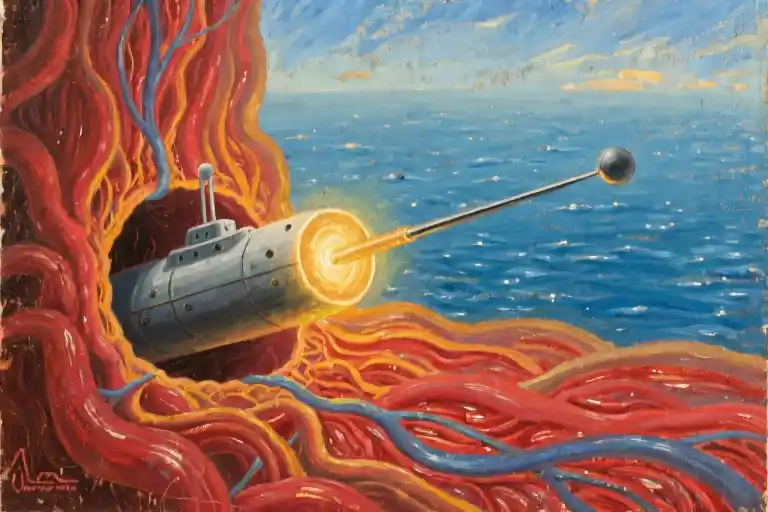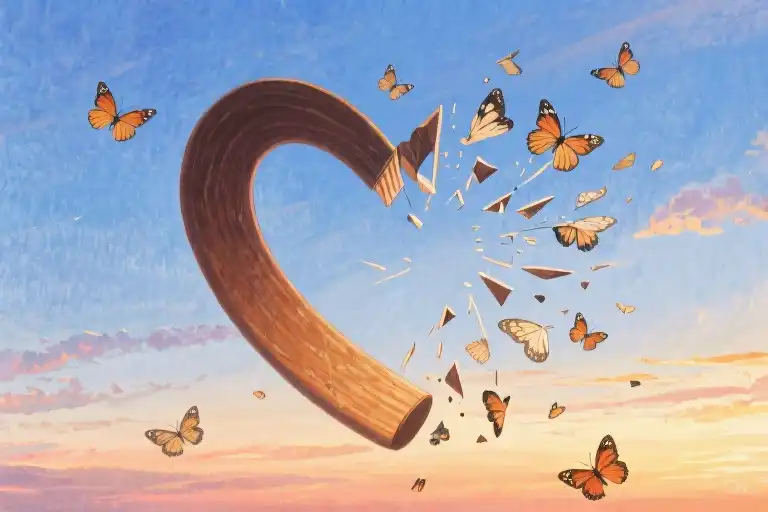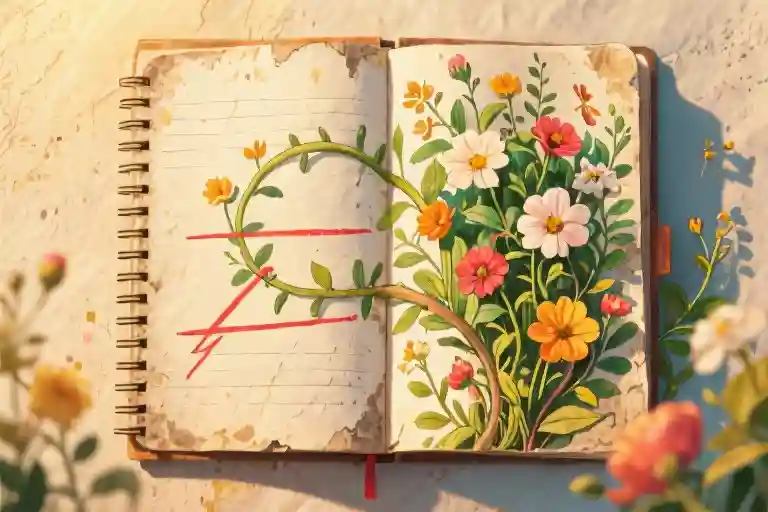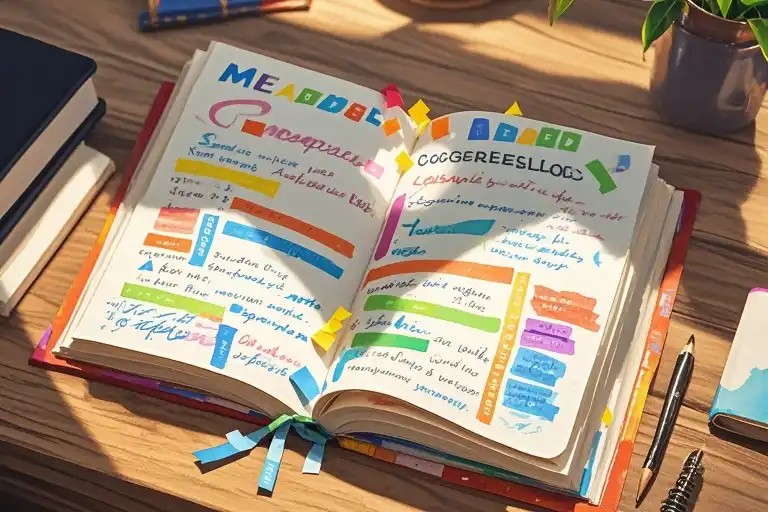The needle glints under fluorescent lights as it breaches the surface of my skin—a submarine diving into crimson depths. I watch, detached yet hyperaware, this medical ritual transforming into something mythic. I walk forward but stay behind, this paradox humming beneath my skin like the vibration of a tuning fork. My heels press into the examination table, absurdly elongated in my perception, as if my body itself can’t decide on its dimensions.
The nurse’s gloved hands move with clinical precision, yet her smile when our eyes meet holds something unreadable. Does she sense the stories I project onto her—the midnight escapes through moonlit windows, the whispered confessions between blood vials? Her rubber gloves squeak as she labels my sample, a mundane sound that anchors me back to the vinyl-covered chair, the antiseptic tang in the air.
This is where surreal healing writing begins: in the collision of sterile reality and the metaphors our minds construct to survive it. The needle becomes a vessel exploring inner oceans; the blood draw turns into an archaeology of self. She knows I love her—not the actual woman in scrubs, but the idea of her, the possibility of connection that shimmers just beyond the reach of my half-self with all its fragmented memories.
What makes these medical metaphors for self-discovery so potent isn’t their originality, but their brutal honesty. When we describe veins as “plump” for the breaking or imagine tumbling through life like erratic currents, we’re doing more than poeticizing pain. We’re creating a language for experiences that defy linear narration—the split self in literature made tangible through submarine needles and pencil-wielding old men who appear without explanation.
The genius lies in the sensory alchemy: the metallic taste when anxiety spikes as the needle enters, the visual poetry of dust motes swirling like miniature galaxies above the blood bag. These aren’t mere flourishes; they’re psychological lifelines. For readers who’ve felt fractured, who’ve romanticized strangers during vulnerable moments, such imagery validates their subconscious coping mechanisms. It whispers: Your mind isn’t breaking—it’s creatively reassembling.
As the tourniquet loosens, I notice three things simultaneously: the nurse’s chipped nail polish beneath her glove, the way my blood separates in the vial like sedimentary layers, and the dawning realization that all rivers eventually forget their original tributaries. Perhaps that’s what the pencil signifies—not an answer, but the graphite smudge of questions we keep redrawing until the page tears.
The Divided Self
A strange duality lingers in the spaces between memory and presence. I walk forward but stay behind—this paradox pulses through every step, every glance backward at the places that shaped this half-self. The sensation is visceral: heels elongating beyond toes, grounding yet unsettling, as if the body itself rebels against linear time.
Memory as Fragmented Mosaic
Each shard of recollection glints with unresolved edges—the childhood bedroom’s wallpaper pattern, the weight of a suitcase left on a train platform, the scent of rain on pavement in cities now foreign. These aren’t chronological markers but emotional waypoints, floating in the mind’s periphery like dust motes in afternoon light. My half-self with all its memories carries them not as baggage but as living tissue, still tender to the touch.
The Body’s Silent Rebellion
Physicality becomes unreliable terrain. Fingers might forget their dexterity mid-gesture; a reflection blurs at the edges after midnight. The heels longer than toes phenomenon manifests beyond metaphor—an actual imbalance in gait, as though the past literally weighs down each step. This corporeal dissonance mirrors the psychological split, where one foot stands firmly in what was while the other reaches toward what could be.
Sensory Anchors in the Storm
To navigate this tumbling state, the hyper-aware mind clutches at present-moment sensations:
- The acidic tang of hospital disinfectant
- The nurse’s latex gloves squeaking against skin
- The rhythmic tap of IV monitors like a morse code from the subconscious
These details become lifelines, tethering the fractured self to something tangible amidst the whirl of disjointed memories. The medical setting heightens this contrast—the sterile environment amplifying the messy, fluid interiority of the narrator’s experience.
Key Psychological Undercurrents
- Depersonalization: The detachment from one’s body (“I see everything” as if observing from outside)
- Temporal Disruption: Collapsed timelines where past and present coexist (“everywhere I’ve gone and each place I’ve left”)
- Somatic Manifestation: Emotional fractures expressed through physical sensations
This chapter’s exploration of split self in literature offers readers grappling with similar fractures a mirror that doesn’t demand reconciliation. Sometimes the healing begins by simply acknowledging the divide—by letting the heels remain longer than the toes until they’re ready to meet the ground whole again.
The Surreal Metaphors in Medical Spaces
The fluorescent lights hum overhead as the needle breaches my skin—a tiny submarine diving into the plump river of my vein. There’s something hypnotic about watching your own blood travel through plastic tubing, that crimson thread connecting your inner world to the external one. The nurse’s gloved hands move with practiced precision, her blue latex gloves squeaking faintly like distant seabirds.
When Needles Become Nautical Vessels
Medical settings have a way of distorting reality. The sterile smell of antiseptic mixes with the metallic tang of blood, creating a sensory cocktail that loosens the anchors of ordinary perception. In this altered state, the needle transforms:
- Submarine: Its slow penetration feels like a vessel descending through layers of warm ocean
- Shipwreck: The moment it settles against my vein wall mirrors a sunken galleon resting on seabed silt
- Dust storm: The swirling cotton ball pressed afterward becomes flurries of marine snow
This metaphor cluster for self-discovery isn’t mere poetic fancy. Trauma therapists note that surreal healing writing often emerges when our brain attempts to process overwhelming experiences through symbolic language. The medical environment—with its inherent vulnerability—becomes fertile ground for such transformations.
The Dance of Projection
“She knows I love her.”
The nurse’s smile after blood collection holds multitudes. Is it professional courtesy? Shared humanity? Or perhaps, in this fragmented memory space, she’s become:
- A lighthouse keeper tending my inner storms
- A mermaid who’ll guide my tumbling currents
- An unattainable moon reflected in clinical surfaces
Psychology explains this as nurse patient love fantasy—a common coping mechanism during medical vulnerability. When our bodies are objectified by procedures, we romanticize caregivers to reclaim agency. The blood test symbolism here serves dual purposes:
- Literal diagnostic tool
- Metaphoric soul extraction
Sensory Anchors in Surrealism
To prevent the split self in literature from feeling unmoored, strategic concrete details tether the fantasy:
- The plump vein‘s visible pulse under skin
- The tourniquet’s elastic bite
- The poetic mental health paradox of feeling most alive while watching life force leave your body
These tactile elements balance the piece’s river metaphor life explorations. Like sediment settling in water, they give weight to the floating imagery.
Why This Resonates
Readers navigating emotional pain or identity fractures often report:
“Finally, someone articulated that hospital-daydream feeling”
By rendering medical trauma through creative writing prompts for healing, the text:
- Validates dissociative experiences
- Provides symbolic vocabulary for the ineffable
- Turns passive suffering into active artistry
The nurse’s uncharted reactions (does she truly know?) and the unresolved needle-as-submarine image linger deliberately. In metaphor for self-discovery, ambiguity isn’t a flaw—it’s the point. Like blood swirling in vial, meaning remains suspended, inviting readers’ own interpretations to precipitate.
The Longing for Rebirth
The hospital room fades into the background as the rhythmic beeping of machines becomes white noise. Here, between the sterile scent of antiseptic and the faint metallic tang of blood, something primal awakens – the human yearning for second chances. The phrase “What I want” pulses through my thoughts like the throbbing in my bandaged arm, each repetition carving deeper grooves of possibility.
The Architecture of Desire
Three pillars emerge from this surreal healing narrative:
- The Family We Build: Not just blood relations, but the chosen bonds that hold us when memories fracture
- The Words We Shape: Language as both wound and salve, the unspoken concerns perched on life’s ledge
- The Motion We Become: From tentative steps to reckless sprints – kinetic metaphors for psychological transformation
The nurse’s smile lingers in my peripheral vision as I inventory these wants. Her gloved hands had moved with clinical precision, yet that fleeting connection sparked something more profound than any blood test could measure. This is where medical symbolism transcends its physical boundaries – the “plump vein” isn’t merely anatomical but emotional topography, vulnerable yet ripe for metamorphosis.
Metaphors in Motion
Consider the dual nature of that pulsating vein:
- Vulnerability: Thin-skinned and visible beneath translucent flesh
- Resilience: Swollen with potential, awaiting the precise pressure of transformation
Like rivers converging toward oceans, these desires tumble through consciousness seeking alignment. The repetition of “What I want” functions as literary GPS, plotting coordinates toward:
1. Emotional recalibration
("a little less grief and a little more callous")
2. Relational bravery
("making eyes" as primitive as it is profound)
3. Kinetic authenticity
(walking → running → verbalizing concerns)The window imagery arrives like unexpected grace notes – those moonlit entry points into alternate realities where love hangs like curtains, simultaneously concealing and revealing. Medical settings become stages for our most human performances, where professionals in scrubs transform into unwitting scene partners in our healing narratives.
Psychological Undercurrents
Beneath the poetic surface, clinical truths emerge:
- The “tumbling” sensation mirrors dissociative episodes documented in trauma research
- “Half-self” terminology aligns with split-self theory in personality psychology
- Vein/breaking imagery reflects catharsis models in therapeutic practice
Yet for all its therapeutic potential, this rebirth fantasy acknowledges its own fragility. The speaker doesn’t claim enlightenment, but rather the courage to “try again” – perhaps the most radical act of self-preservation in our fractured modernity. Like sediment carried by those metaphorical rivers, we deposit fragments of our former selves along the journey, lighter with each mile toward the sea.
Direction and Chaos
The river doesn’t ask permission to change course. It tumbles over rocks, carves new paths through stubborn earth, forgets its old banks with the same ease as it forgets yesterday’s raindrops. My life feels like that sometimes—all this relentless motion without a map, all these tributaries of memory merging and separating until I can’t tell which currents are truly mine.
Tumbling to flow in the same direction—that’s the silent prayer hidden beneath every blood test, every conversation, every time I watch moonlight stripe a hospital floor. We talk about finding purpose as if it’s a treasure chest waiting on some riverbed, but what if direction isn’t about discovery? What if it’s surrender? Letting the weight of your history become the current that carries you rather than the rocks that cut your feet.
The Romance of Wrong Turns
The fantasy arrives like moonlight through blinds: her unlatched window, my hands gripping the sill, the dramatic absurdity of climbing into someone’s life instead of knocking. We crave these storybook moments when reality feels like a poorly folded map—the nurse’s smile becomes a secret code, the needle’s pinch transforms into a submarine voyage. It’s easier to romanticize than to admit we’re lost.
But rivers don’t apologize for bending. Watch how water behaves when it hits an obstacle—it doesn’t struggle backward. It finds the cracks, wears down resistance drop by drop, becomes a mirror for whatever sky hangs above it. There’s wisdom in that fluid persistence. My grandmother used to say grief moves like water too: ‘First it drowns you. Then you learn to float. One day you realize you’ve become the vessel.’
When Metaphors Leak
Reality always interrupts the poetry. The nurse adjusts her gloves, the old linoleum squeaks under practical shoes, and suddenly my beautiful submarine needle is just… a needle. This is the gift and grief of surreal healing writing—it lets us reframe our chaos until we’re strong enough to face it unfiltered.
Maybe that’s why the old man with a pencil appears at the end. Not to explain, but to witness. To trace the edges of all this tumbling without correcting its course. Some journeys aren’t about reaching oceans but about becoming them—wide enough to hold contradictions, deep enough that even shipwrecks become part of the landscape.
What I want is to trust the current. Not the destination, not the map, but the quiet insistence of water finding its way home.
The Old Man and the Pencil: An Unfinished Metaphor
The river finally spills into the ocean, carrying all my tumbling thoughts like sediment. Saltwater mixes with fresh, just as memories blend with fantasies. That’s when I see him—an old man sitting on the shore with a pencil. He doesn’t look up as waves lick his worn shoes, doesn’t react when seabirds cry overhead. His pencil hovers above a notebook filled with crossings-out, the paper wrinkled with tide marks.
This unexpected figure feels both alien and familiar. Like finding a mathematical equation scribbled in a love letter. The pencil moves, not writing but drawing—a single curving line that could be a river, a vein, or the crescent moon outside a nurse’s window. The lead snaps. He pockets the broken tip without blinking.
Perhaps this is where all rivers lead: not to answers, but to better questions. The old man becomes another piece of my tumbling—a human punctuation mark at the end of this surreal journey. I imagine him as the curator of half-selves, collecting our abandoned versions like seashells. His pencil doesn’t judge my submarine needles or plump veins; it simply traces their shapes before the tide washes them away.
As I turn to leave, the wind carries a whisper of graphite and salt: ‘Direction isn’t about the riverbed, but the water’s willingness to move.’ The words dissolve like foam, leaving only the rhythmic tumbling of waves—the same motion that carried me here, that will carry me elsewhere.





